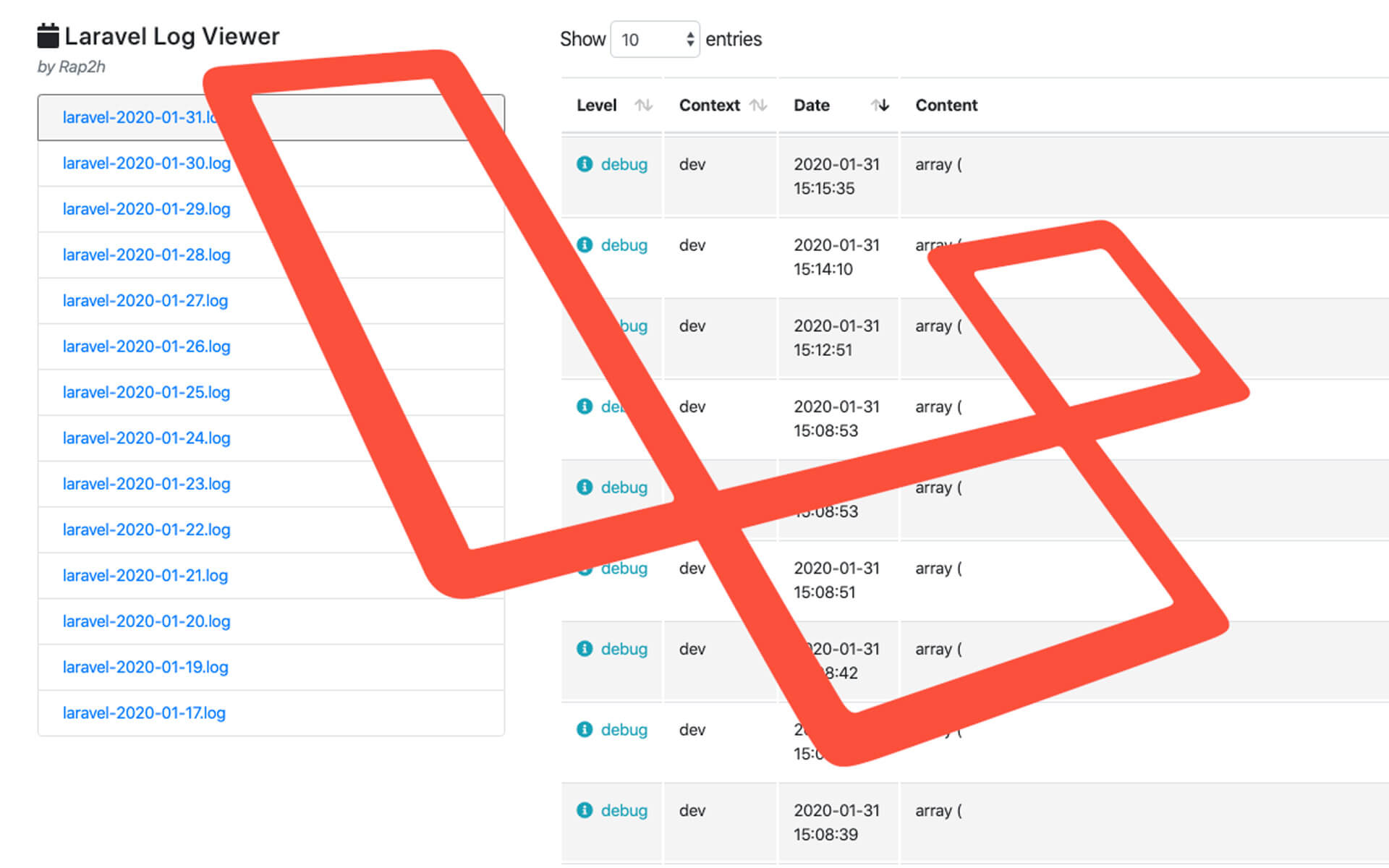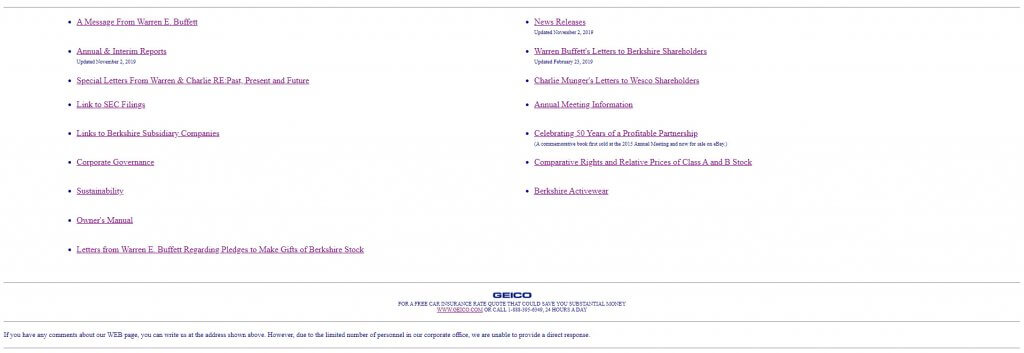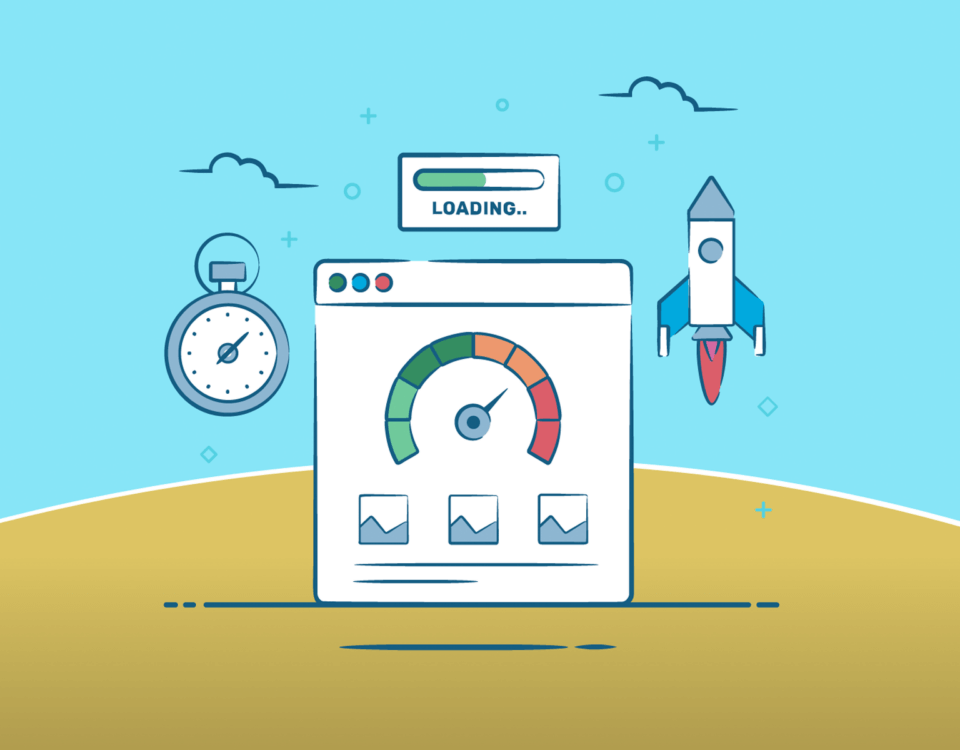
Simple Authentication With Guards In Laravel
December 18, 2019
Easily View Your Laravel Logs Using Laravel Log Viewer
January 31, 2020
1. White space / space is a bad thing
Space or 'white space' as it is called in the web design world, is one of the most important design elements to consider when building a website. Space also extends to print and graphic design. White space can be any colour, it does not mean that it is just white. It merely refers to space around elements not the colour.
In the example below, having too much white space is also not good. There needs to be a balance of having just the right amount of white space, to not only please the eye but look good as well, and enough so that the elements can 'breath.' In this case, the elements look like they are floating around with no structure.

Example of a website with too much white space.
If you don't have enough white space on a website, the page will feel cluttered and it will be more difficult to read. This will lead to users leaving the web page.

Example of a website with not enough white space.
Something else to consider with space is the consistency of space. One needs to have equal amounts of white space throughout a website. Either each section needs to be the exact same size in spacing or at least equal variations of spacing. For example, if the page has 60px top and bottom padding but the inner elements of the page, for instance between sections on a page are 30px top and bottom padding and between headings or paragraphs, it is 15px top and bottom padding - although they are not the same size, they are all equal divisions of each other therefore applying consistency throughout. In the example below the spacing between each element are all different in sizes. What they should have done was to make the top and bottom padding the same amount for the section with all the links.

Example of a website that has inconsistent spacing.
2. My website will show up on Google immediately
If only this were true. Unfortunately, a brand new website can either take a few days up to two weeks or more to populate on search engines. Obviously, this is also dependent on if your website has a sitemap and if your website is being indexed or crawled. Without these crucial components, having your website appear quickly on Google will be near impossible.
3. Changing things on a website doesn’t take long
This can be true for half the time. This depends if you are using a CMS (content management system) or a hard-coded website.
Read my other blog on: "Why should you use a content management system (CMS)"
4. I don’t need to maintain my website
I can't stress enough how important maintaining your website is. In my previous article: "The importance of website maintenance" I explain in more detail the necessity of keeping your website up-to-date. Not only to prevent hackers from getting into or destroying your site but to add new, fresh content that Google loves. In my world, a website is unfortunately never done. They are always changing, improving and upgrading. There are new tools, platforms and ways to do things better and quicker. So to keep on top of hackers and technology you need to have a maintenance plan for your website, be it a small plan or one for your business.
To find out more about maintenance and the cost of maintaining your website, contact us today.
5. Anyone can build a website
Ah.... no. Let me give you an example: If you go to a doctor to have your tooth removed, you now cannot suddenly start your own practice and remove other people's teeth just because you think you know what to do or how it is done. Nor does that make you qualified for the job. Same thing in web design. If you want a quality website done right, you will have to ask a professional web designer to get the job done. I once had a client that decided to do build their own website using Microsoft Word. Don't even ask me how that worked out but it looked horrible.
Yes, you get those companies that charge an arm and a leg for a website, but for an average Joe wanting a quick website, it does not have to be soo expensive. Click here to find out more about setting up an online presence for your business.
6. You never need to re-design your website
Technically a website needs to new, fresh, updated look every 4-5 years. New technology and design trends push web designers to update their websites every few years. This also helps keep users engaged and interested in your brand.
7. Websites need to have lots of content
No, less is more when it comes to websites. Websites are not there to be an archive or library of everything in the history of your business. I have seen this all too often. Websites should have broken down sections of the most information for the user to read. Users scan, they don't read. So having a forever scrolling page of information will make the user lose interest and eventually leave the website.
Ways to condense content-heavy websites: accordions, side scroll containers, read more buttons, easy to read fonts, sliders and carousels.
8. Get as many people’s opinions as you can
This can be dangerous and is one of the worst things you can do as a designer or someone looking for advice or opinions from other people. Not only can it cost you more money, but you are also never going to get everyone's approval on a project or design. That's just life. Rather ask 2-3 people their opinion and what they think could be done better, make changes, revise again and keep it at that. Something to consider doing over a space of time is A/B Testing. This type of testing can prove to be very useful for making small changes over time as opposed to making drastic changes over a shorter space of time.









